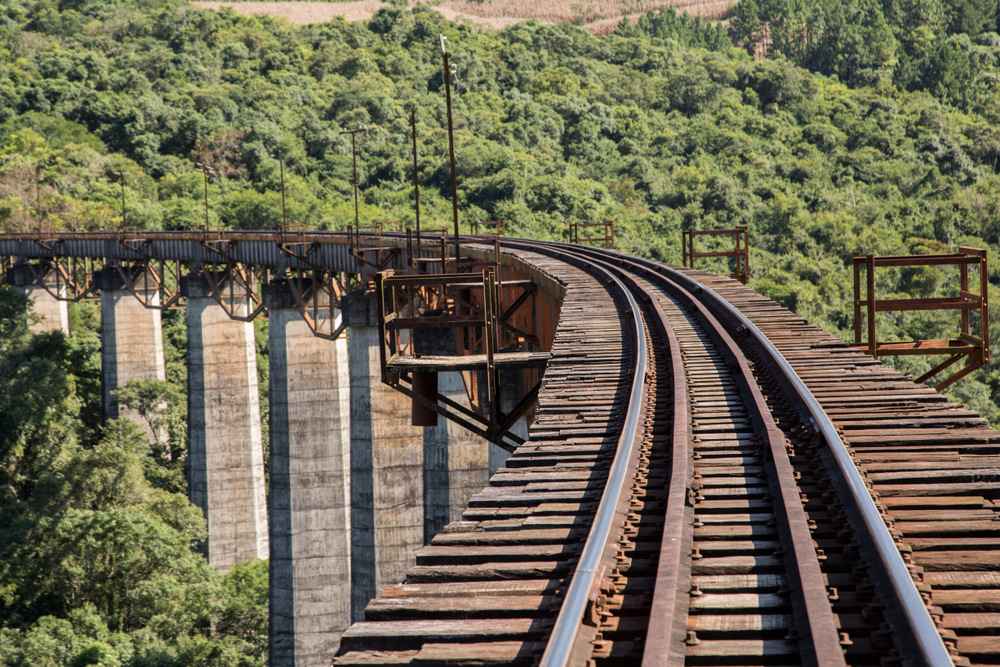Along with a large part of the world, Brazil adopted railway transport at the end of the 19th century, importing British technology, designs, and materials. The first Brazilian railway began operations in 1854, located in the interior of São Paulo state, before the mode of transport spread countrywide. The peak of Brazil’s rail network came during the presidency of Juscelino Kubitschek (1956-1961), reaching 32,287 kilometers before the military dictatorship began eradicating railways deemed to be “deficient.”
As a result, at the end of the 1980s, Brazil had practically no passenger railways, despite its huge size and population. The only long-distance train line of the sort connects the southeastern cities of Belo Horizonte and Vitória and is operated by mining company Vale.
Of the approximately 30,000 km of railway lines in Brazil, 29,000 km are privately owned. To give an idea of the relative insignificance of railways in the company, only 5.4 percent of Brazil’s industrial production is transported by train; 75 percent is moved on roads, according to Fundação Dom Gaspar.
The impacts caused by a truck driver’s strike in 2018 laid bare Brazil’s dependence on roadway transport and sparked a public debate on the need to expand the country’s railway system. However, little has changed since. Flawed planning, an absence of political will, lack of funds, and corruption have all kept Brazil from getting back on the tracks.
The northeastern pipe dream
The federal government’s most recent gamble in the field of rail transport is the so-called Transnordestina line, which is not a particularly novel idea. The endeavor seeks to develop cargo logistics in the Northeast region, taking a line through 81 municipalities in three states, starting from Eliseu Martins in Piauí and heading toward the ports of Pecém, in Ceará, and Suape, in Pernambuco.
The project began with an official ceremony in June 2006, when then-President Luiz Inácio Lula da Silva laid the cornerstone in Missão Velha, in...


 Search
Search






































